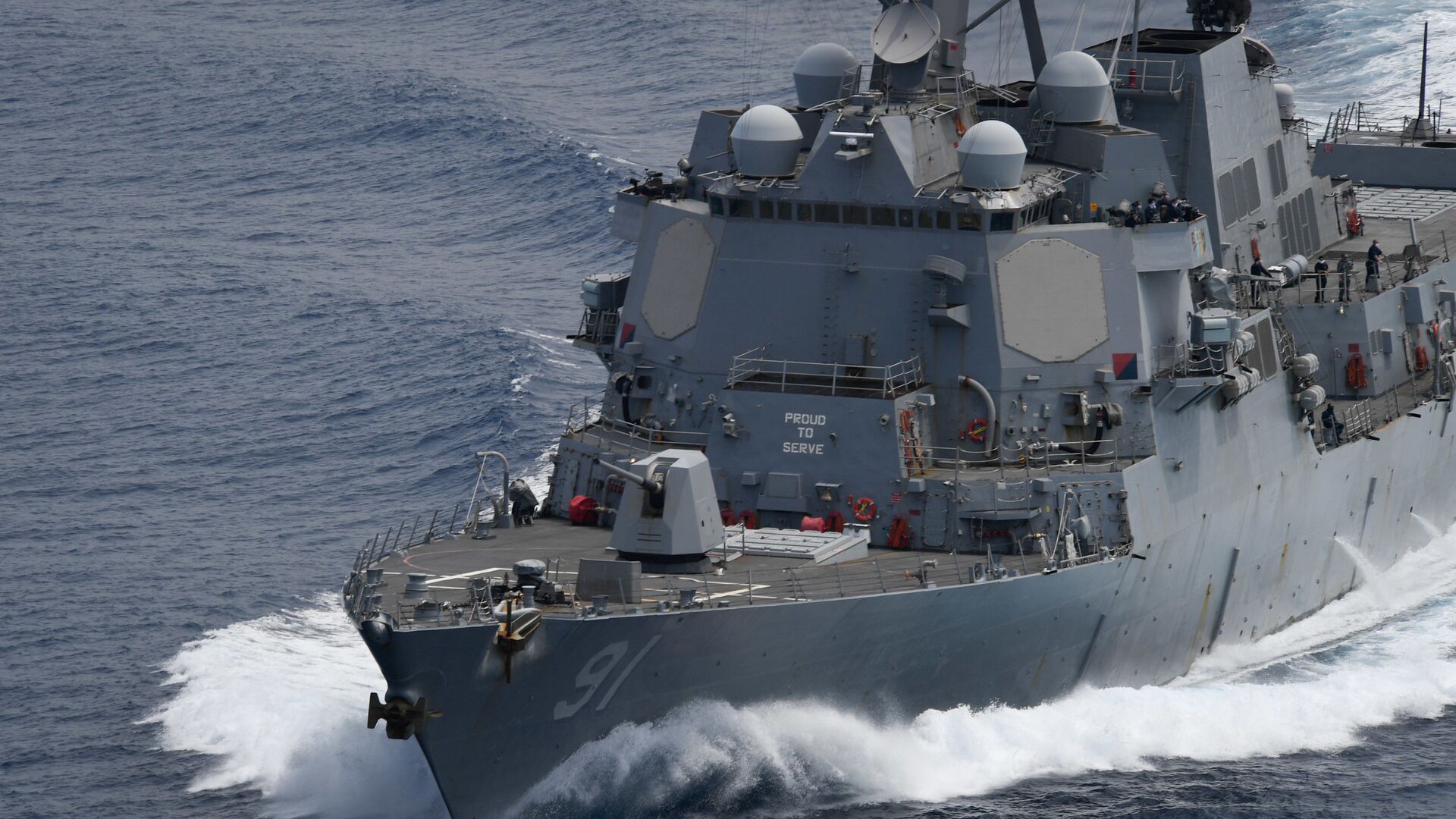https://sputnikglobe.com/20210714/us-tests-autonomous-ocean-surface-underwater-surveillance-technology-1083387241.html
US Tests Autonomous Ocean Surface, Underwater Surveillance Technology
US Tests Autonomous Ocean Surface, Underwater Surveillance Technology
Sputnik International
WASHINGTON (Sputnik) - The United States is evaluating maritime surveillance technology in support of Coast Guard efforts to protect its maritime borders and... 14.07.2021, Sputnik International
2021-07-14T22:56+0000
2021-07-14T22:56+0000
2022-08-06T13:20+0000
us
world
newsfeed
military & intelligence
department of homeland security (dhs)
coast guard
https://cdn1.img.sputnikglobe.com/img/07e4/07/10/1079907717_0:88:2636:1571_1920x0_80_0_0_09888c6498fc754531faae724baaa95b.jpg
"DHS S&T [Science and Technology] teamed up with the Coast Guard, University of Southern Mississippi (USM), the US Naval Research Laboratory (NRL), the Applied Research Laboratory (ARL) at Penn State, Ocean Aero, Inc., Cherokee Nation Strategic Programs (CNSP), and the Homeland Security Systems Engineering and Development Institute (HSSEDI), to develop, acquire, evaluate, and test specialized, environmentally powered (wind and solar), multi-mission capable, unmanned surface and underwater vessels," the release said on Wednesday.The evaluation team initiated acceptance testing of six unmanned vessels at USM’s Marine Research Center (MRC) at the port of Gulfport, Mississippi. They will use MRC's specialized lab facilities and waterfront access to evaluate vessel capabilities in multiple areas, including navigation, surface maneuverability, diving and subsurface operations, according to the release.The vessels are capable of operating effectively for long periods using only wind and solar power and are a platform for cameras and advanced sensors to detect anomalies and threats, the release added.The effort is reportedly in support of the US Coast Guard’s mission of protecting the more than 95,000 miles of maritime border shoreline and 15,000 miles of waterways, seaports, and other commercially navigable waters, according to the release.
Sputnik International
feedback@sputniknews.com
+74956456601
MIA „Rossiya Segodnya“
2021
Sputnik International
feedback@sputniknews.com
+74956456601
MIA „Rossiya Segodnya“
News
en_EN
Sputnik International
feedback@sputniknews.com
+74956456601
MIA „Rossiya Segodnya“
Sputnik International
feedback@sputniknews.com
+74956456601
MIA „Rossiya Segodnya“
us, newsfeed, military & intelligence, department of homeland security (dhs), coast guard
us, newsfeed, military & intelligence, department of homeland security (dhs), coast guard
US Tests Autonomous Ocean Surface, Underwater Surveillance Technology
22:56 GMT 14.07.2021 (Updated: 13:20 GMT 06.08.2022) WASHINGTON (Sputnik) - The United States is evaluating maritime surveillance technology in support of Coast Guard efforts to protect its maritime borders and commercially navigable waterways, the Department of Homeland Security (DHS) said in a press release.
"DHS S&T [Science and Technology] teamed up with the Coast Guard, University of Southern Mississippi (USM), the US Naval Research Laboratory (NRL), the Applied Research Laboratory (ARL) at Penn State, Ocean Aero, Inc., Cherokee Nation Strategic Programs (CNSP), and the Homeland Security Systems Engineering and Development Institute (HSSEDI), to develop, acquire, evaluate, and test specialized, environmentally powered (wind and solar), multi-mission capable, unmanned surface and underwater vessels," the release said on Wednesday.
The evaluation team initiated acceptance testing of six unmanned vessels at USM’s Marine Research Center (MRC) at the port of Gulfport, Mississippi.
They will use MRC's specialized lab facilities and waterfront access to evaluate vessel capabilities in multiple areas, including navigation, surface maneuverability, diving and subsurface operations, according to the release.
The vessels
are capable of operating effectively for long periods using only wind and solar power and are a platform for cameras and advanced sensors to detect anomalies and threats, the release added.
The effort is reportedly in support of the US Coast Guard’s mission of protecting the more than 95,000 miles of maritime border shoreline and 15,000 miles of waterways, seaports, and other commercially navigable waters, according to the release.


